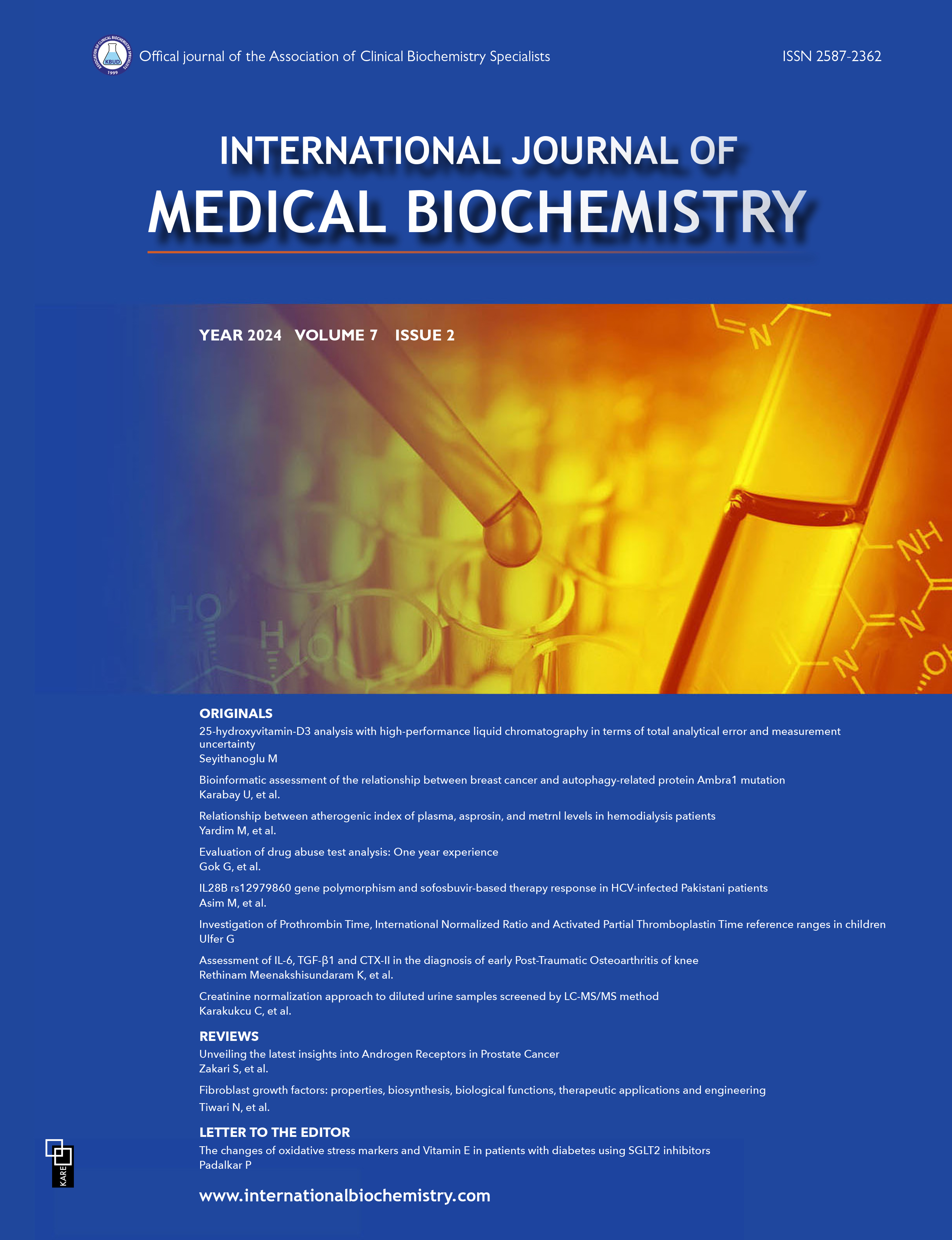Biochemical Markers and NLR Levels in Covid-19 Infection: In Cases With Severe Pulmonary Involvement According to CT Score
Asuman Akkaya Fırat1, Haluk Kılıç2, Serkan Elarslan3, Gülsah Yıldırım4, Ebru Tarıkçı Kılıç5, Ugur Ayan61Health Sciences University Fatih Sultan Mehmet Training And Research Hospital, Medical Biochemistry Laboratory, Ataşehir Istanbul, Turkey2Health Sciences University Fatih Sultan Mehmet Training And Research Hospital, Medical Microbiology Laboratory, Ataşehir Istanbul, Turkey
3Health Sciences University Fatih Sultan Mehmet Training And Research Hospital, Internal Medicine Clinic, Ataşehir Istanbul, Turkey
4Health Sciences University Fatih Sultan Mehmet Training And Research Hospital, Radiology Clinic, Ataşehir Istanbul, Turkey
5Health Sciences University Ümraniye Training And Research Hospital, Anesthesia And Reanimation Clinic, Ümraniye Istanbul, Turkey
6Goztepe Prof. Dr. Süleyman Yalçın City Hospital İslab-2 Laboratory Kadıköy Istanbul
INTRODUCTION: Many studies have been conducted on ferritin, fibrinogen, D-dimer, and neutrophil-lymphocyte ratio (NLR), which are biochemical tests, to determine the severity and prognosis of the disease in the early period of coronavirus disease 2019 (COVID-19) infection. We aimed to determine the compatibility of these easily accessible and affordable tests with computed tomography (CT) in determining the severity of the disease at an early stage.
METHODS: This study was carried out retrospectively on 79 patients. In all patients, nasal and pharyngeal swabs were collected and tested for SARS-CoV-2 RNA with reverse transcription-polymerase chain reaction assay. The severity of the disease was determined by computed tomography imaging. According to lung involvement, patients who were found to have a severe infection and divided into the severe group (n=26), and those with milder symptoms were divided into the non-severe group (n=53). The demographic information and laboratory parameters of the patients were obtained from the medical records of the hospital. Analyses were performed using the Statistical Package for the Social
Sciencesversion 23.0 for Windows.
RESULTS: NLR (8.36±2.45; 3.3±2.04 p<0.001), ferritin (ng/mL) (736.1±240.2; 374.7±248.4 p<0.001), fibrinogen (mg/mL) (725.7±84.9; 416.5±186.1 p<0.001), D-dimer (ug/mL) (3.68±1.42; 1.55±1.16 p<0.001), and C-reactive protein (CRP) (mg/dL) (81.1±11.9; 27.9±13.8 p<0.001) levels were found to be significantly higher in the severe group than the non-severe group. In addition, CRP (mg/mL) levelswere positively correlated with NLR (r=0.607 p<0.01). Receiver operator curve analyses were carried out to assess the efficacy of NLR, ferritin, fibrinogen, and D-dimer parameters.
DISCUSSION AND CONCLUSION: These results suggest that NLR, ferritin, fibrinogen, and D-dimer may be useful biomarkers for the early detection of critical cases of COVID-19 infection, paralleling CT findings. These available tests can benefit clinicians in low-resource settings where access to complicated diagnostic methods may be limited.
Corresponding Author: Asuman Akkaya Fırat, Türkiye
Manuscript Language: English




















